*NURSING > QUESTIONS & ANSWERS > Walden University NURS 6640 Midterm Exam [76 Questions] (2021) (All)
Walden University NURS 6640 Midterm Exam [76 Questions] (2021)
Document Content and Description Below
1.A 35-year-old patient seeks treatment for depression and anxiety after an abusive relationship. To help empower the patient, the PMHNP wants to teach the safe-place exercise to create a feeling of c... alm. In order to walk the patient through the exercise, the PMHNP first says: 2. The PMHNP is working with a patient who has dissociative disorder and requests pharmacological interventions for dealing with her trauma. What education does the PMHNP provide to the patient regarding medication therapy? 3. The patient attempts the PMHNP’s sleep hygiene recommendations for 2 weeks, but does not make any progress mitigating nightmares and hyperarousal. Which behavioral strategy does the PMHNP suggest next? 4. After informing a prospective patient about limits of confidentiality, the patient consents to the “conditions” of confidentiality and signs an informed consent form. Several weeks later, a lawyer representing the patient’s spouse for a court case, asks the PMHNP for the disclosure of information about the patient. The PMHNP should: 5. The PMHNP meets with an adolescent patient who has depression and often presents with resistance when discussing his parent’s divorce. For the past couple of sessions, the patient has been quiet, sometimes refusing to speak. To further support 6. The PMHNP employs psychodynamic psychotherapy with a patient who experiences anxiety and depression. As the process enters the psychoanalytic end of the psychodynamic continuum, the PMNHP will focus on: 7. The PMHNP is working with a patient who witnessed her father pass away after suffering for several months from terminal cancer. The PMHNP sees this as a traumatic event. The patient reports sometimes feeling out of touch with surroundings; almost as if things feel like a dream. “Sometimes that sensation lingers for a while,” the patient says, “and other times I snap out of it quickly.” What does the PMHNP infer about the condition based on psychotherapy concepts for trauma? 8. The PMHNP is working with a school-aged child who has been diagnosed with depression. The child has attended several sessions with the PMNHP, but recently presents with avoidant behavior by showing increased distress and being late to sessions. What approach does the PMHNP need to employ with the child to continue making therapeutic progress? 9. An 11-year-old patient has been exhibiting low self-esteem at school and acting out. According to Maslow’s hierarchy of needs, which of the following questions would best be addressed first by the PMHNP? 10. The PMHNP is working with a patient who experiences anxiety around her parents that later leads to poor impulse control. What will the PMHNP do to employ 11. The patient is a 56-year-old female patient diagnosed with panic disorder and reports symptoms that include heart palpitations, frequent trembling, and feelings of choking in stressful situations. What special consideration does the PMHNP make? 12. The PMHNP is working with a veteran who has posttraumatic stress disorder (PTSD). The PMHNP believes that dual awareness will be beneficial in allowing the patient to focus on the here and now. What strategies can the PMHNP use to develop dual awareness in the patient? 13. The PMHNP has been treating a 15-year-old patient with a history of abuse and neglect. Thirty minutes into their therapy session the patient jumps up and begins to pace around the room. Utilizing Socratic dialogue (SD) the PMHNP’s best action would be to: 14. The PMHNP is caring for a patient with borderline personality disorder. Using a psychoanalytic psychotherapy approach, the PMHNP attempts to intensify the patient’s transference to enhance emotional processing by: 15. When completing this exam, did you comply with Walden University’s Code of Conduct including the expectations for academic integrity? 16. A PMHNP is treating a 50-year-old patient who suffers from depression. When he was growing up, he was often responsible for taking care of his three younger siblings. Since then, the patient puts other people’s needs before his own. Based on this information, the PMHNP would conclude that his interpersonal style is . 17. The PMHNP is assessing a patient who grew up in a foster home because she was neglected and abused by her birth parents at a young age. The patient admits to having difficulty forming and maintaining relationships throughout her life. Understanding maladaptive schemas, which statement does the PMHNP predict that the patient is likely to make? 18. A 28-year-old male patient is experiencing distress related to the workplace. What might the PMHNP ask to assess affective development? 19. The PMHNP is meeting with a new patient who is a young veteran back from serving two tours overseas. When reviewing the patient’s health history file that was sent from the VA, the PMHNP learns that several months ago, the patient was diagnosed with PTSD, but never followed up with treatment for it. After a comprehensive mental health assessment, the PMHNP confirms the PTSD diagnosis and understands that which therapeutic approach will be the most effective as a first-line treatment modality? [Show More]
Last updated: 2 years ago
Preview 1 out of 17 pages
.png)
Buy this document to get the full access instantly
Instant Download Access after purchase
Buy NowInstant download
We Accept:

Reviews( 0 )
$20.00
Can't find what you want? Try our AI powered Search
Document information
Connected school, study & course
About the document
Uploaded On
May 13, 2021
Number of pages
17
Written in
Additional information
This document has been written for:
Uploaded
May 13, 2021
Downloads
0
Views
57

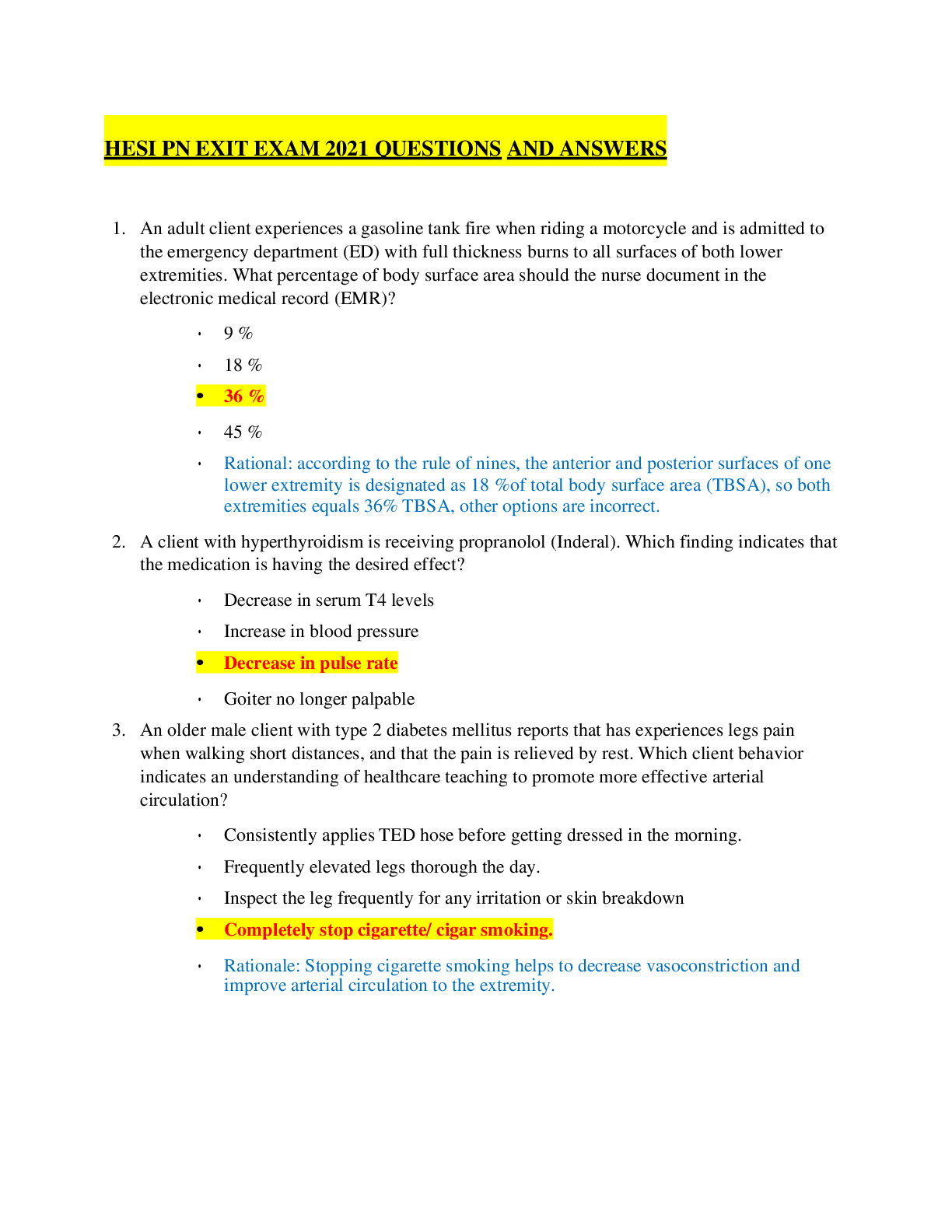




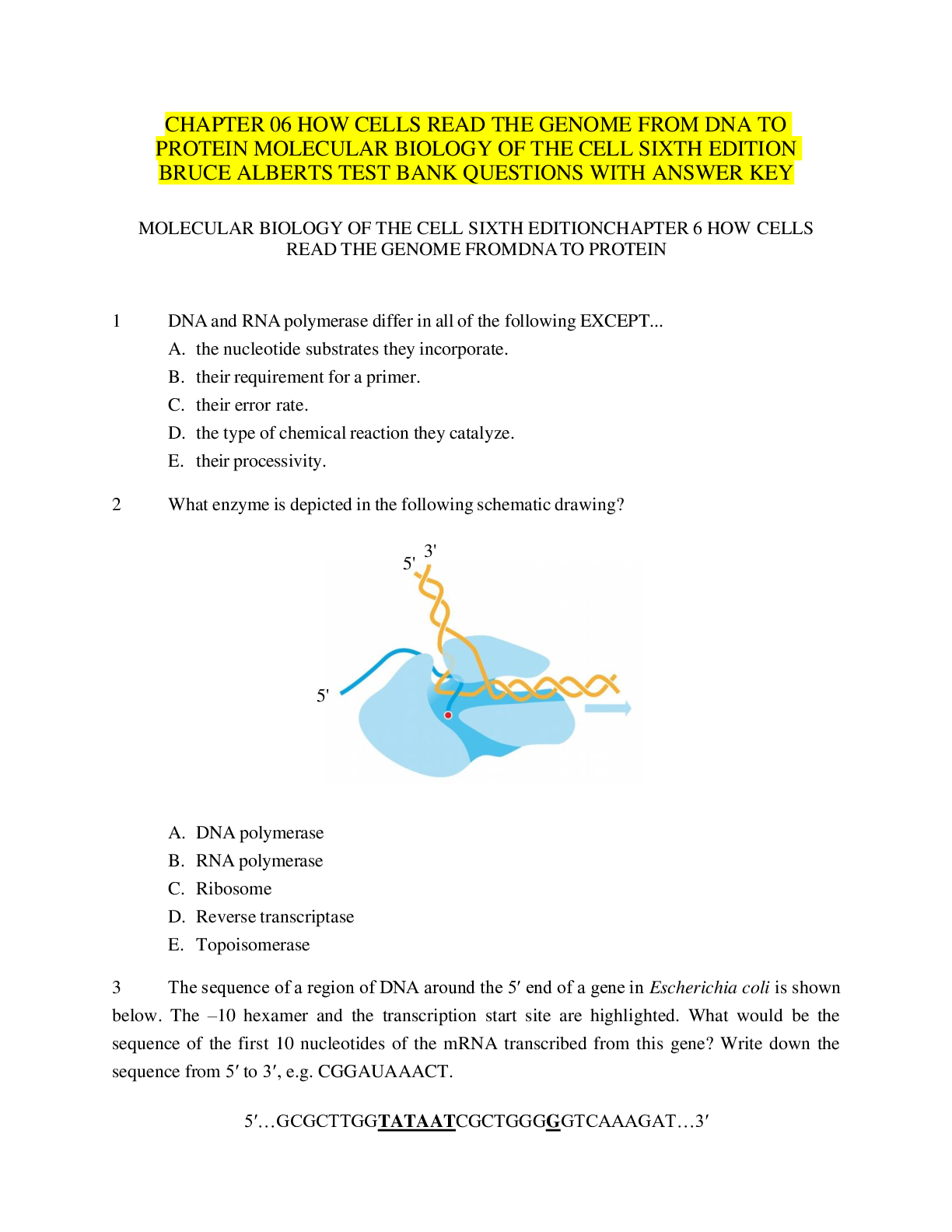



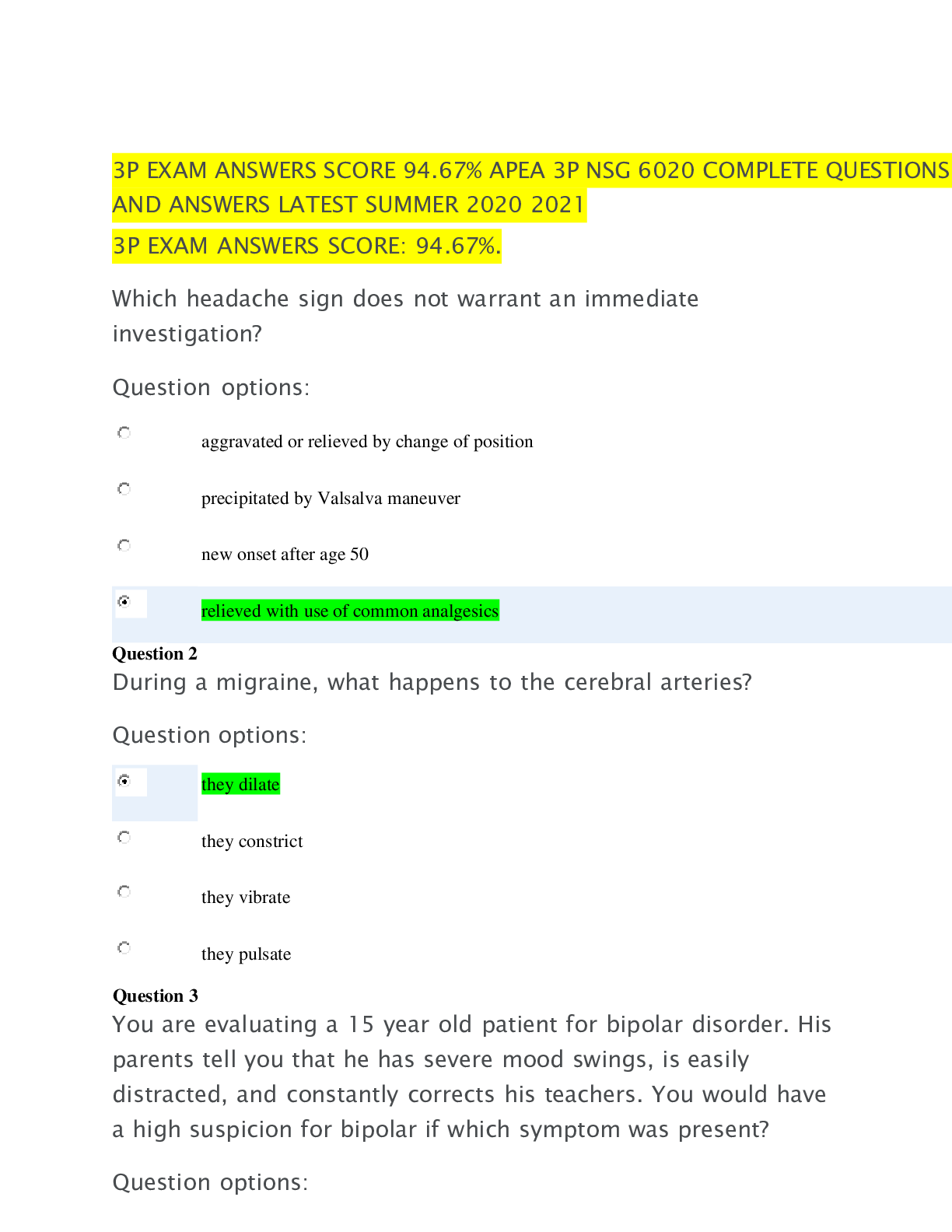



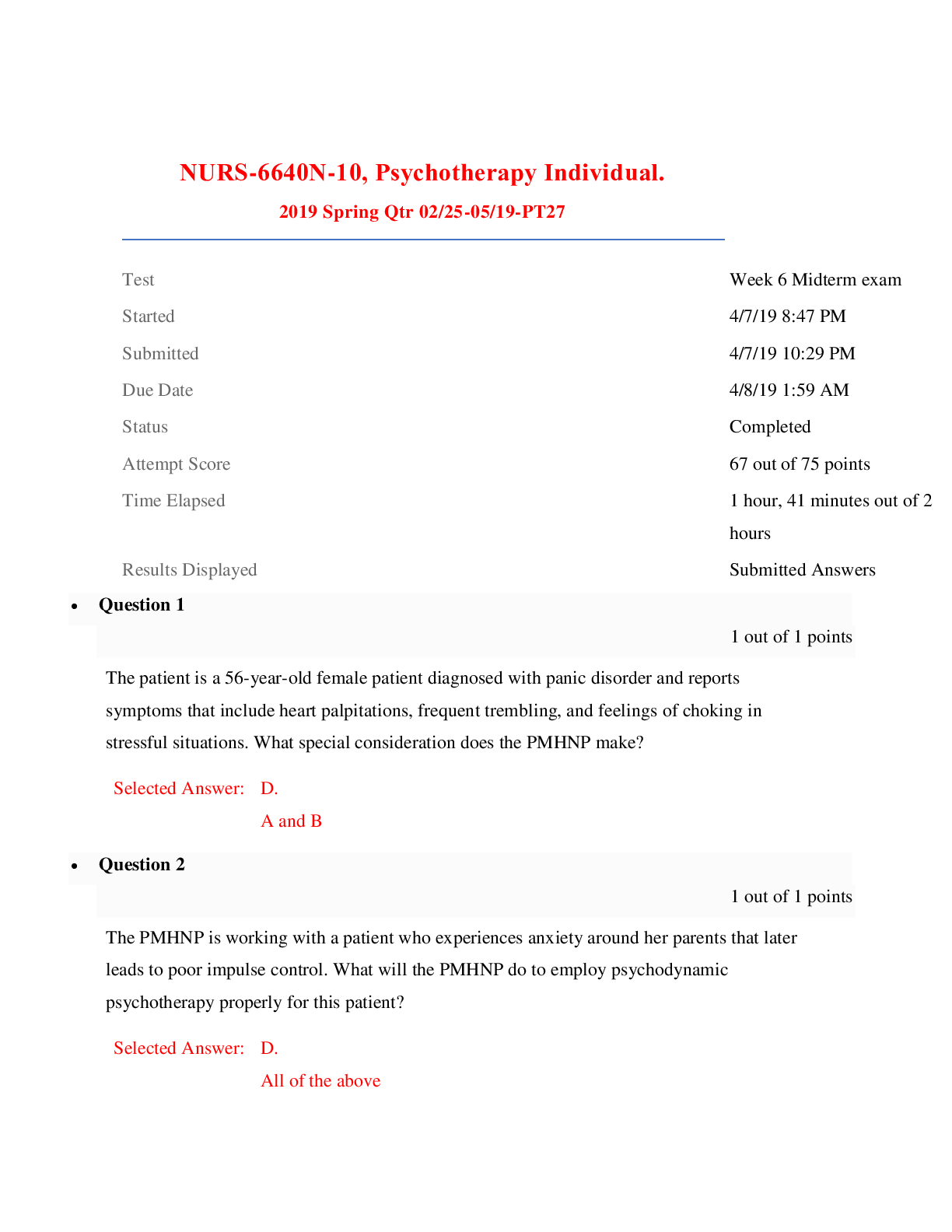

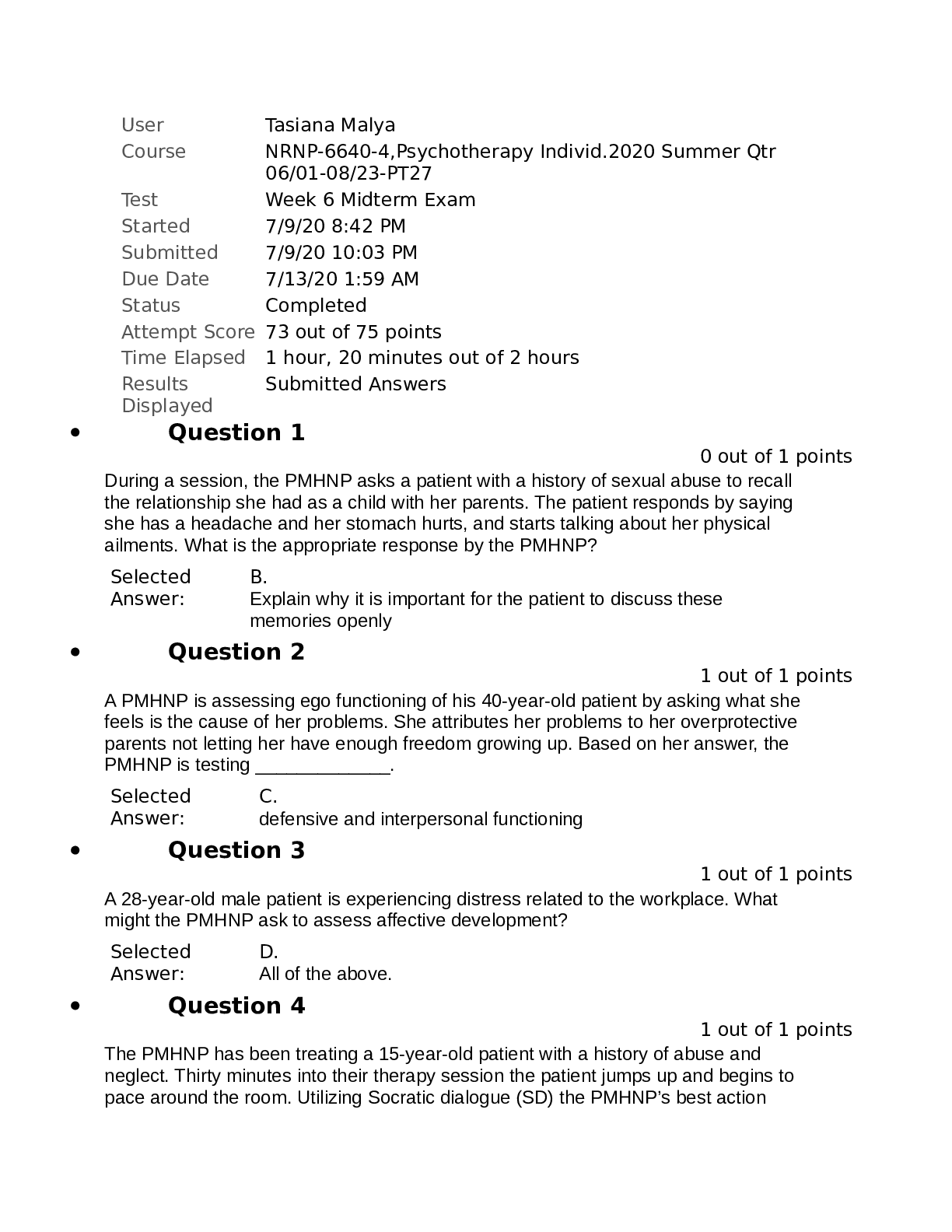
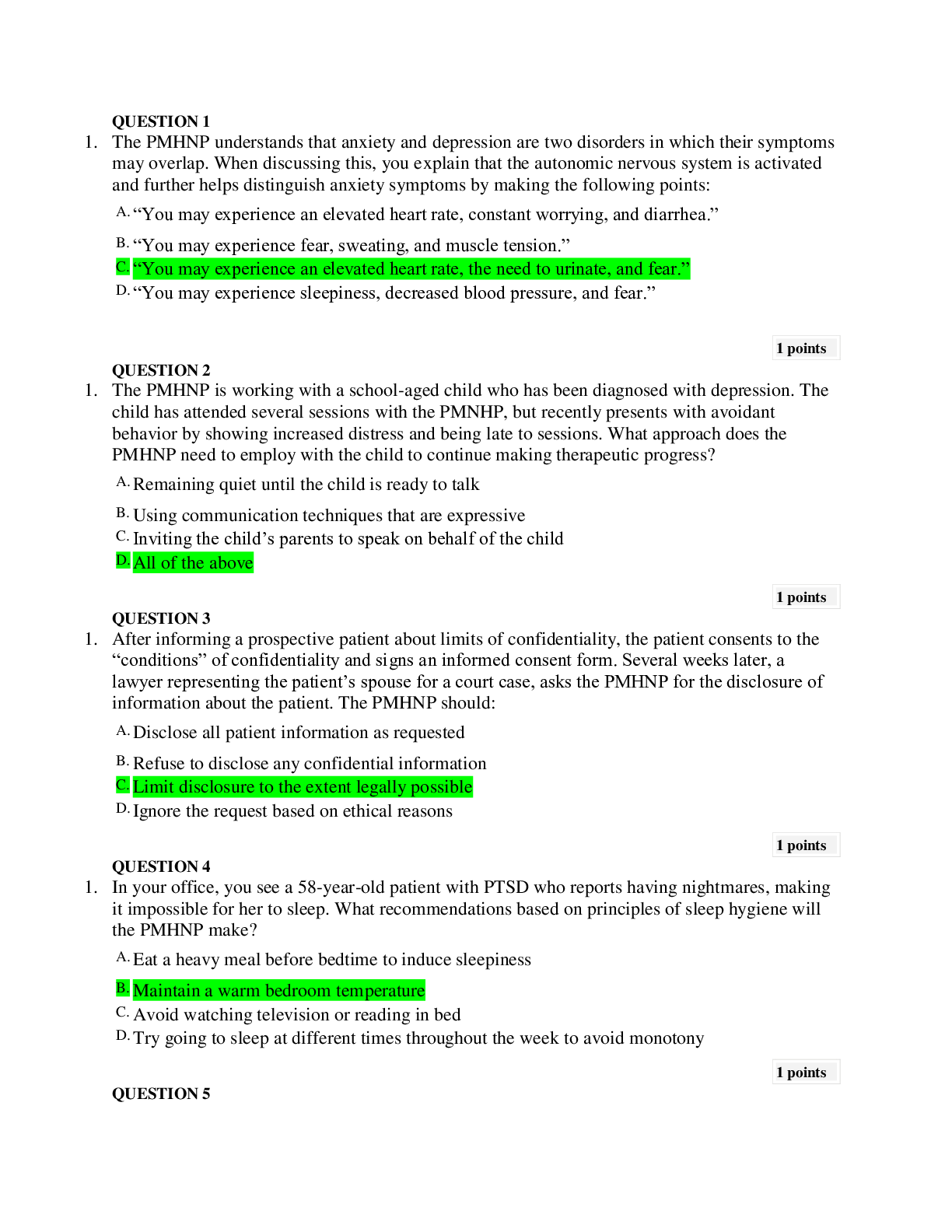
.png)


